I absolutely love morning routines. I love to imagine myself doing a combination of Viewing Sunlight, Meditation, Yoga, Journaling, Cold Showers, Wim Hof Breathing, Working Out, Stretching, and Reading (VMYJCWWSR) the first thing in the morning and afterward being happy and laser-focused all day.
Over the years of reading books, blogs, articles, and listening to podcasts, I stumbled over many practices and tricks of highly successful and inspiring people that all promise to be great for you in many different ways. If I could only do all of them;
Spending some time on those practices each morning would make my mind and body ready for the day and help me accomplish whatever goals I’ve set.
If what I’ve described above sounds great to you you’re probably someone like me and you’re probably making the same two basic mistakes from behind your rose-tinted glasses.
To point them out, let’s simplify what a morning routine does and display it in a graph:
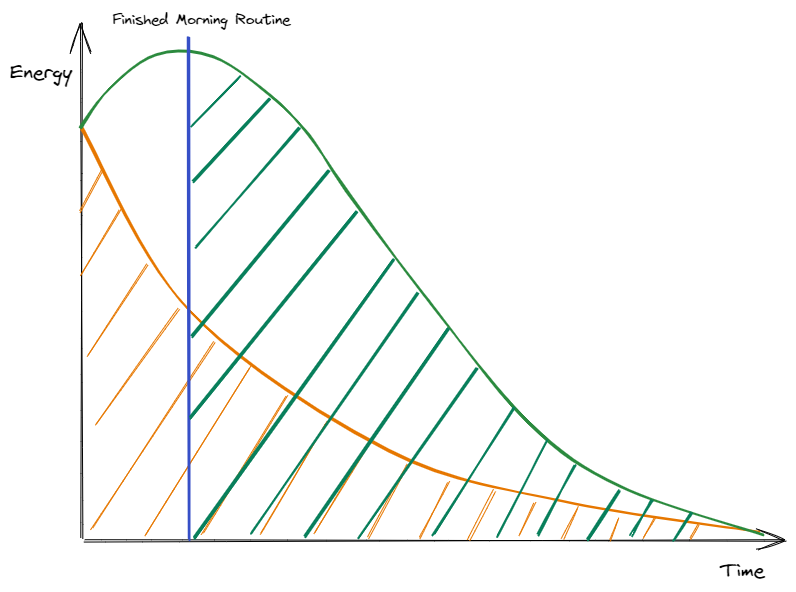
The goal of the morning routine is to spend some time at the start of the day doing things that increase your overall energy so that you can be more productive the rest of the day than you would have been otherwise.
What you can see in the graph is your standard day. Let’s imagine that you start out with a certain amount of energy that decreases as the day progresses.
The yellow line shows your energy levels without a morning routine, the green line for your energy levels with a morning routine. The area below the curve shows your productivity in each case.
Different morning routines are beneficial in different ways. They can increase alertness, focus, well-being, clear-mindedness, happiness which will eventually lead to you being able to do things better which I then for the lack of a better word call energy.
Of course, this is also a simplification of how energy levels work and how to measure productivity. However, it reduces the complexity to make the point concise and keep this article short.
Now that we’ve defined the case and goal let’s point out the differences between the goal and the rosy picture painted in the first paragraph:
There’s not that much time left in your day
If we would VMYJCWWSR the graph would look more like this:
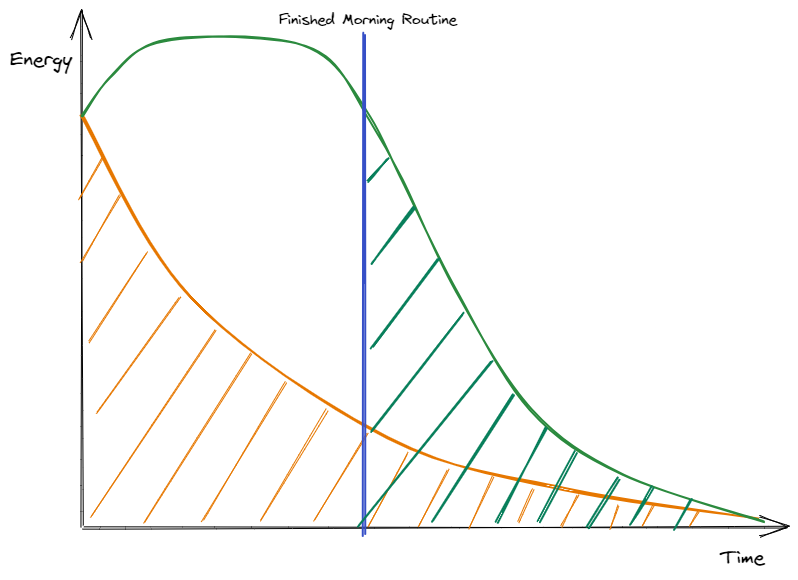
By the time we start to follow our daily goals, there’s barely any time left to work on it.
We often underestimate how hard it is to cut out additional time to do those very beneficial things.
“To cut out one hour of 24 should be easy!”
But are there really 24 hours available in our day? Should we not first subtract the 8 hours of sleep, 2 hours of eating, 8 hours on work, an hour of hygiene, and an hour of travel time first?
That leaves us 4 hours of free time a day. And let’s be honest: The type of person that reads blogs on morning routines hardly only works 8 hours ;). So let’s assume it’s 10 hours of work on an ordinary day. That leaves us with 2 hours of free time each day. Removing another hour for an extensive morning routine then takes away 50 % of the free time that you could spend with your friends and family, go out for dinner, watch your favorite Netflix series or take a lovely afternoon nap.
Whether those numbers match with your day is not important. When you do this calculation for your own life the numbers may be different, but the result will be the same.
Starting a new practice will drain your energy (at first)
Doing things, especially new things is hard. It drains energy. If you’d start with VMYJCWWSR tomorrow, the graph would look like this:
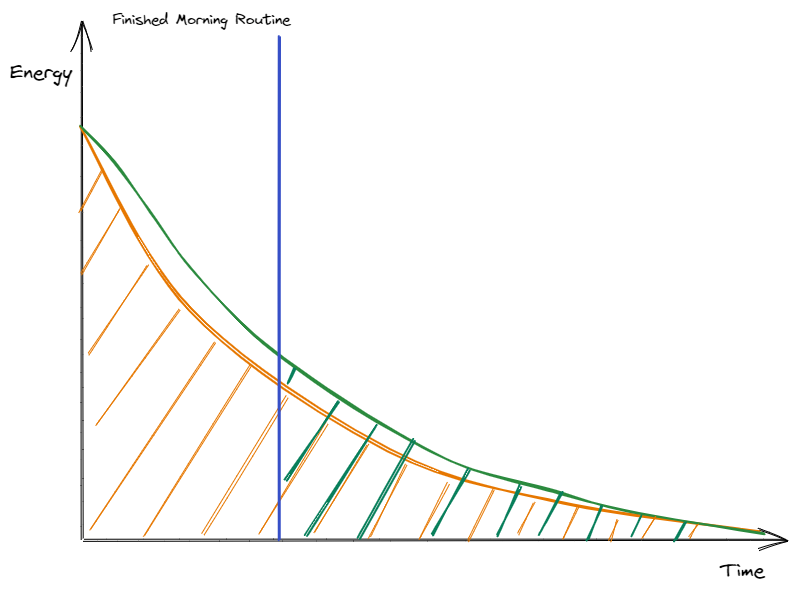
When we start to do something new it takes a lot of our energy to do it. Once we get used to it it’s much easier to keep doing it. This comic describes it perfectly:
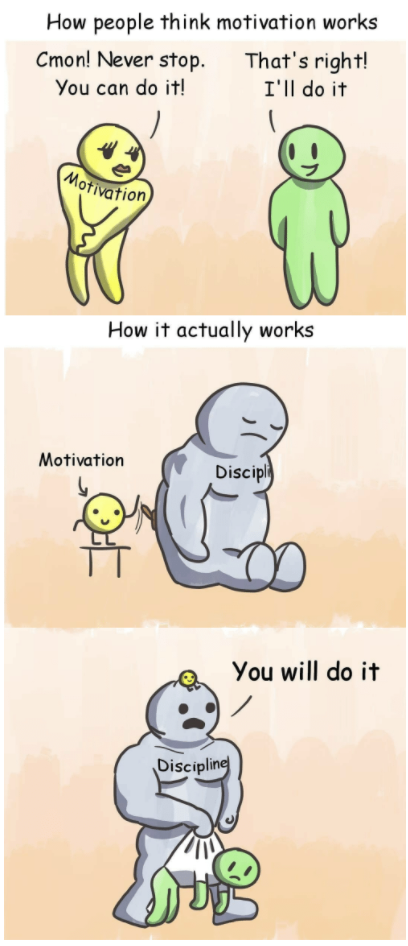
It takes time for a specific practice to pay off by giving us energy rather than taking it. When I first started meditation about 5 years ago, I could barely do it for 10 minutes. The sitting was uncomfortable and I needed to force myself to do it consistently. Gradually It got easier and I got addicted to how organized and clear my mind felt after a session; Which is another term for saying discipline kicked in and I got more (energy) out of it than I had to put in. I started to love the sessions and over the years increased the time spent on it to 20 minutes.
Contrarily, if we’d start VMYJCWWSR tomorrow, we would be so drained by the time we finish the morning routine that the thing we did the morning routine for is now harder to do.
Because of that, it’s better to introduce new practices one by one, then give it some time to see whether it sticks or not, and then try something new. After a while, you want to end up with a core routine that you do consistently, that gives you energy instead of taking it. Then you can use just a few minutes each day to try whatever new thing you just read about.
Persistence wins the race
Let’s look at morning routine progress over time:
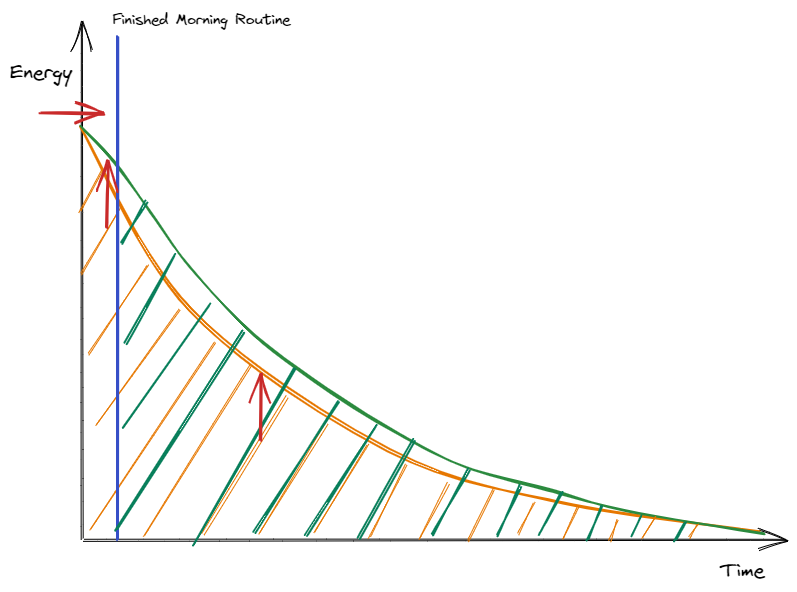
If we start today with what we just learned, our morning routine will gradually change the graph and improve our lives in three ways:
- The practices will start to give you energy instead of taking it!
- As you introduce more practices the morning routine will become longer! (until it hits a sweet spot)
- Your baseline energy levels will increase because most VMYJCWWS practices have not only short-term but also long-term effects!
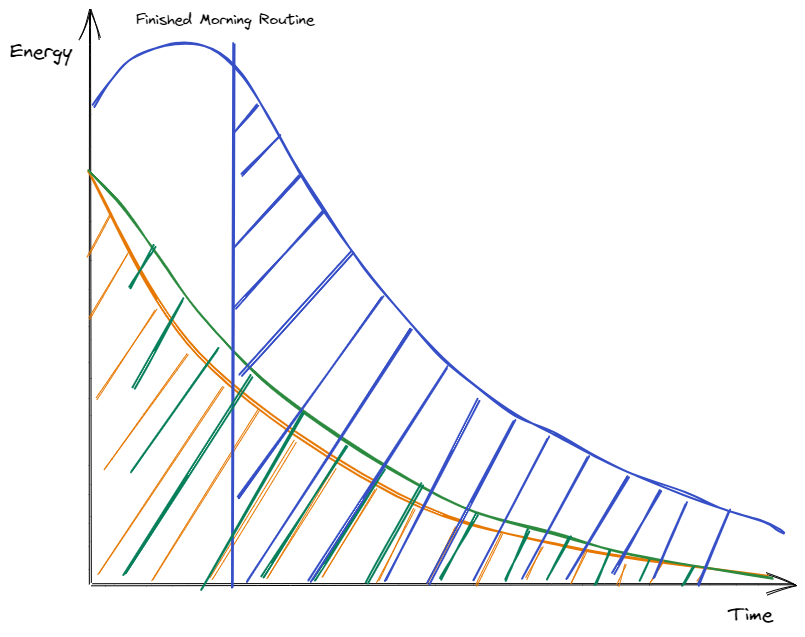
And because I love to know what people do for their morning routines I’d like to quickly share mine as a side note and encourage you to do the same in the comments!
- View Sunlight
- Drink a glass of salt water & a lot of regular water
- Meditate
- Stretch
- Do my Ankis (new)
